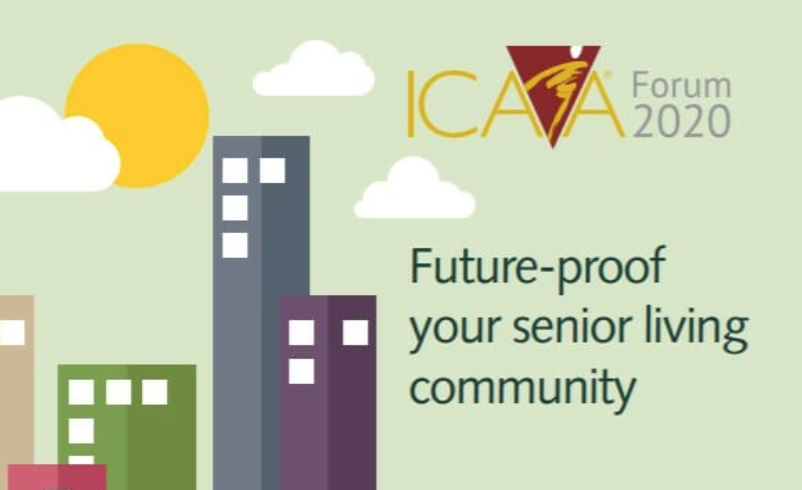
Senior living thought leaders who gathered this past fall have sketched the framework of the “new normal” of housing and services for older adults, outlining five trends to “future-proof” the industry in a new report.
More than 85 independent living, assisted living and memory care leaders joined together at the International Council on Active Aging Forum in November. Together, they identified a philosophy and infrastructure of the “optimal community,” which offers lifestyle and services desired by current residents, with the quality-of-life features future residents will seek.
The ICAA Forum participants agreed that senior living remains an important option for older adults, as long as new, relevant models emerge.
“The visions created by the industry thought leaders are ambitious, innovative and inspiring,” ICAA founder and CEO Colin Milner said. “The upside of the COVID-19 pandemic for senior living is the opportunity to truly reinvent the product to one that will appeal to the younger older adults who are future residents and expand beyond the small percent of older adults who now choose their combination of housing and services.”
Five trends for senior living in 2021 to emerge from the forum:
- Redefine the meaning of “community.” Repositioning the senior living community as an accessible neighborhood within the larger community would make it easier to expand services to older adults and to open services and amenities to nonresidents. Providing affordable housing for staff and their families might help solve staffing challenges facing operators as well as the economic challenges facing workers.
- Expand the built and unbuilt environment. Outdoor features, including sidewalks, gardens, paths and recreation, are as important as indoor spaces. Redesigning indoor spaces also would allow flexibility and multiple uses. Large and small spaces with moveable walls, “tiny house” features, virtual healthcare spaces designed for technology and privacy, and patios and balconies that provide accessible areas for both active and passive pursuits were among the ideas shared to improve environments.
- Integrate technology through all operations. Future demand means technology-enabled spaces for both staff and residents. Internet connections, software and hardware need to be available both indoors and outdoors. Wearable technologies, including activity trackers and heart rate monitors, and rooms outfitted with smart utilities, remote monitoring, voice-activated systems and in-house channels embedded in living and service areas, are important to future residents.
- Emphasize wellness culture and lifestyle. Wellness is the sales pitch attracting prospective residents to a lifestyle. That includes a healthcare component, which became more important to older adults during the pandemic.
- Strengthen workforce quality, growth and retention. Staff initiatives are as important as resident-directed initiatives. The importance of attracting and retaining a quality workforce to the senior living industry has become even more important to operators during the pandemic, which faced workforce shortages even before COVID-19. In addition to recognition, increased wages and benefits, on-site healthcare, dining and other amenities will be important considerations for attracting employees. Professional development and advancement opportunities, along with flexible work schedules and options for affordable housing near the workplace, could help relieve staff turnover while reducing travel time and the need for employees to hold second jobs.
Baseline strategies for addressing these trends can be found in the “Creating a path towards the ‘next normal’ in senior living” report that came out of the ICAA COVID-19 Senior Living Task Force meetings held this past spring.


